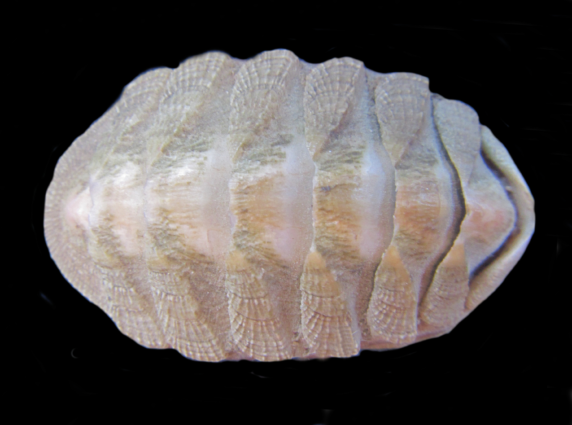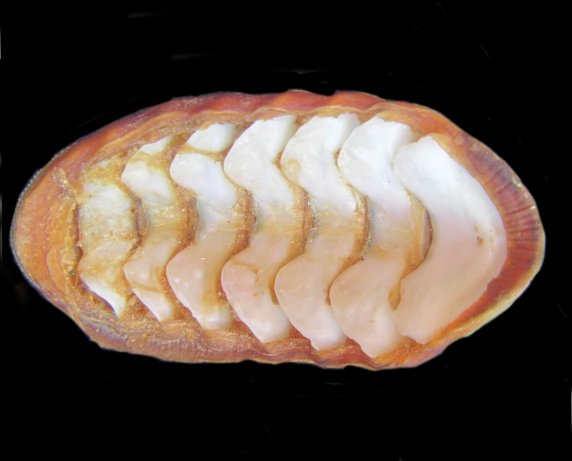Conspicuous Chiton, Stenoplax conspicua

 Conspicuous Chiton, Stenoplax conspicua. Chiton collected from within the estuary of the Magdalena Bay complex, Baja California Sur, October 2018. Size: 8.6 cm (3.4 inches) x 4.4 cm (1.7 inches). Collection, photograph and identification courtesy of Bob Hillis, Ivins, Utah.
Conspicuous Chiton, Stenoplax conspicua. Chiton collected from within the estuary of the Magdalena Bay complex, Baja California Sur, October 2018. Size: 8.6 cm (3.4 inches) x 4.4 cm (1.7 inches). Collection, photograph and identification courtesy of Bob Hillis, Ivins, Utah.
The Conspicuous Chiton, Stenoplax conspicua (Pilsbry, 1892), is a member of the Ischnochitonidae Family of Chitons. They obtain their common name from its large size when compared to other chitons. They have an elongated oval profile, with the length being about twice the height, and their dorsal surface has a fairly high arch, the edges of the plates are marked with fine radial and concentric ridges, and the girdle has a velvety feel. The plates are gray-green in color, except in the center of the shell, where the outer layer has normally worn away and a pinkish under-layer is visible. The Conspicuous Chiton Shell reach a maximum of 9.5 cm (3.7 inches) in length and 4.8 cm (1.9 inches) in height.
Conspicuous Chitons are found on rocks that are surrounded by sand. During the day these shells crawl along the rocks at the ocean’s edge surface and they bury themselves in the sand at depths up to 3 m (10 feet). They emerge at night to feed.
Conspicuous Chitons range from Southern California to Guerrero Negro, Baja California. Some sources place them as far south as the Cape Region and in to the Sea of Cortez.
A synonym is Ischnochiton conspicuus.